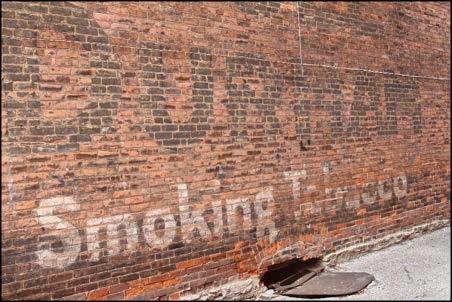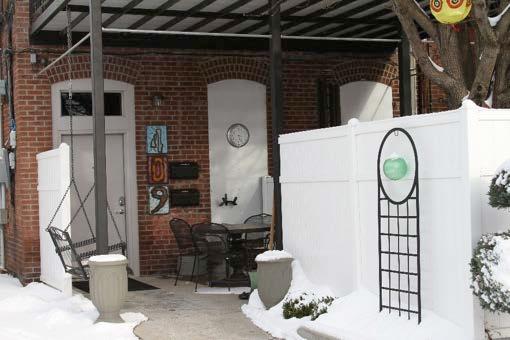
2 minute read
DOWNTOWN REVITALIZATION PLAN
by REA site
Not Recommended
• Use of bag mix cement mortars for repointing.
Advertisement
• Use of power tools or grinders is not recommended for use on historic masonry. The use of hand tools is an effective and safer method for removal of mortar.
• Painting or application of coatings on to previously unpainted masonry.
• The use of sandblasting and other abrasive cleaning methods is prohibited on historic masonry.
Design Guidelines
Windows
Windows help to define the architectural character and style of a historic building. They also make up a large percentage of a building’s exterior walls. The integrity of a building is often lost with the removal of original windows or the introduction of inappropriate replacements.

Recommended
• In most cases, original windows are most appropriate and should be retained whenever possible.
• When original windows are deteriorated beyond repair (window cannot be made to fit tightly; or many parts of the window are either damaged or deteriorated beyond repair or missing), choose a replacement that fits the original opening and matches the original in type and method of operation, material, glass size and reflectivity and mounting division.
• Prevent deterioration of wood windows and doors by repairing, cleaning, and painting as needed.
• If wood elements are deteriorated beyond repair, replace by patching or piecing-in with wood consolidating with approved epoxy products.
• Install new storm windows that maintain the original size, shape and design of the original window. The storm window frame may be wood or metal and should be prefinished or paintable.
Not Recommended
• Changing the original shape, size, dimensions, design, or pattern of the window configuration.
• Avoid using aluminum storms with clear aluminum frames, reflective glass, or high profile design, which detract from the original window character.
Design Guidelines
4. SIDEWALLS/REAR AND/OR SIDE ENTRANCES
The back and sidewalls of commercial buildings are often overlooked when considering restoration and repairs. A side or rear entrance offers access to the building at a location that is often closer to available parking, and provide for an additional means of egress increasing fire safety. Traditional service functions of loading, unloading of merchandise and trash disposal should remain at rear entrances. Screen walls and storage bins can be designed to partially or completely conceal the clutter of trash bins. To remove the negative impact of multiple trash containers, several owners may find it convenient to establish a central location for the collective storage and pick-up of trash.
Recommended
• Restoration of ornate or finished sidewalls in the same manner as the front facades.
• Providing or restoring painted signs on sidewalls that historically had such advertising with designs evoking the character of the historic sidewall signage.
• Placement of all garbage and debris away from entrances.
• Install awnings over side and rear entrances to indicate the door is in use.

• Removal of failing add-on rear structures, not historic to the original.
Not Recommended
• Using sidewalls for large inappropriate signs, billboards, or historically inappropriate signage.
• Cutting new openings in rear and sidewalls unless required for egress.
5. AMENITIES - SIGNS/LIGHTING/AWNINGS/PAINT SIGNS
A variety of signs add to the attractiveness and vibrancy of the downtown; however, too much of a good thing results in visual clutter and confusion. When determining the appropriateness of a sign, consider not only the business it represents but how it will fit within the context of the streetscape. A beautiful sign thoughtfully designed and professionally made reflects a solid, reputable business.
Businesses often need several types of signs to capture the attention of people passing by in a vehicle or on foot. The primary business sign identifies the business name or provides an image such as a business logo. A secondary sign may contain a listing of products and services and other contact information.




